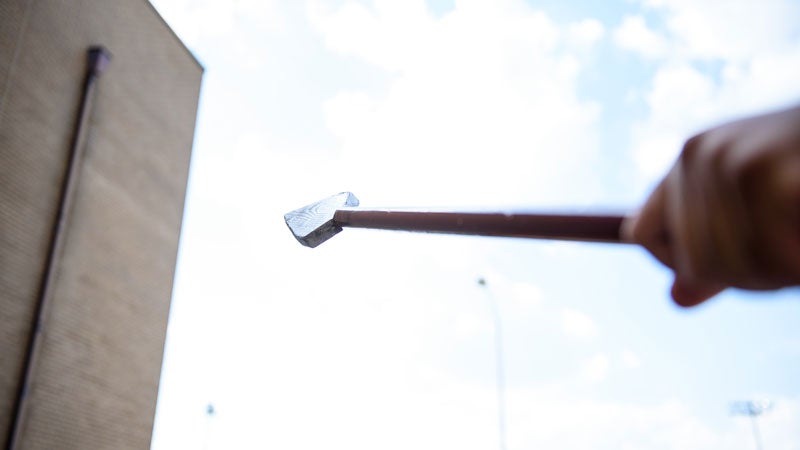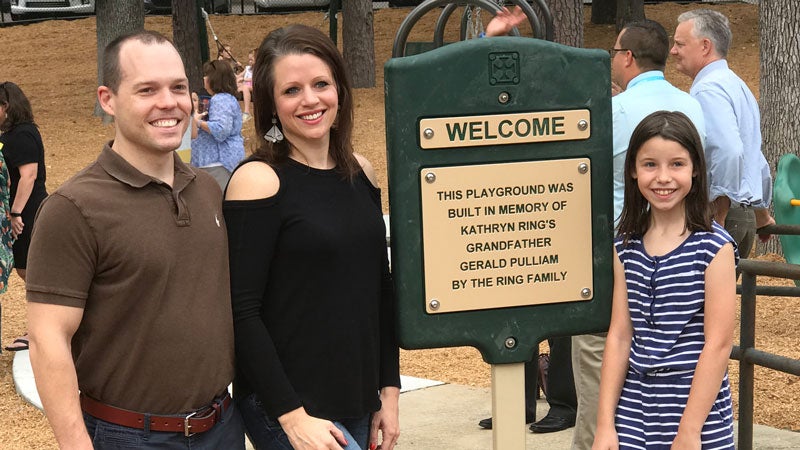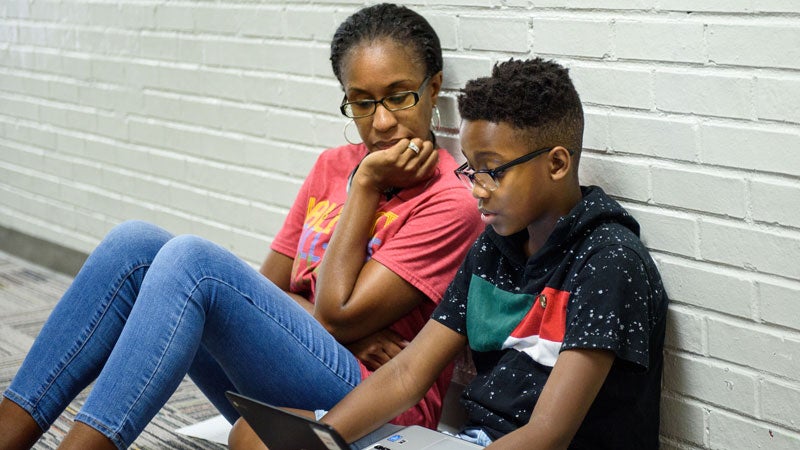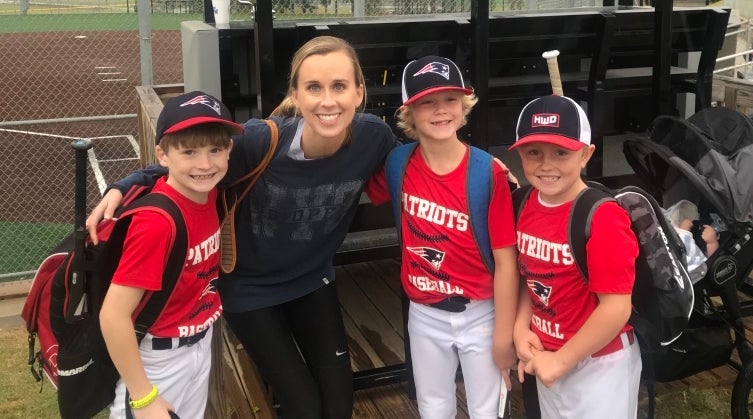Each spring high school students from all over Alabama don togas and compete in Olympic-style games and mythology trivia alike. It’s Ancient Rome come back to life, in the form of what is called the Junior Classical League convention.
When it comes time for the 3D model competition, you’ll see small scale models of the Roman coliseum or maybe even a chain mail shirt made of soda can pop tops. Then a life-size chariot is rolled onto the scene, bike wheels and all, and then a 14-foot siege tower. As far as we can tell, Homewood High School students are the only ones in the state building these colossal replicas. “I think people were really impressed because most people build cardboard models, not 14-foot towers,” senior Homewood Theresa Hardin says.
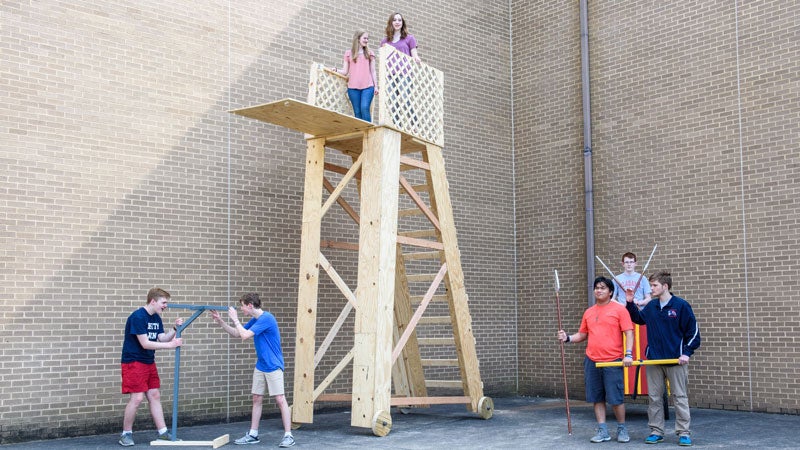 The tower had been in the works for the past three years, the chariot for two, and a third project, a groma (more on that to come), one year. It’s all the work of the school’s Ancient Technology Team—a sort of Latin-meets-robotics endeavor that involves recreating ancient Roman technologies. And then there’s a third reason students like to get involved with the team: “Mr. Welle is the coolest person ever to possibly exist,” senior Katherine Coulter says of their Latin teacher and club sponsor Doug Welle.
The tower had been in the works for the past three years, the chariot for two, and a third project, a groma (more on that to come), one year. It’s all the work of the school’s Ancient Technology Team—a sort of Latin-meets-robotics endeavor that involves recreating ancient Roman technologies. And then there’s a third reason students like to get involved with the team: “Mr. Welle is the coolest person ever to possibly exist,” senior Katherine Coulter says of their Latin teacher and club sponsor Doug Welle.
The groma was crafted by two freshmen interested in both Latin and woodworking—who both bought “Varsity Latin” shirts at the convention this year. “Latin seemed like the most fun and interesting language,” George Breeden says. “I love building things, and this club was the closest I could get to doing it.”
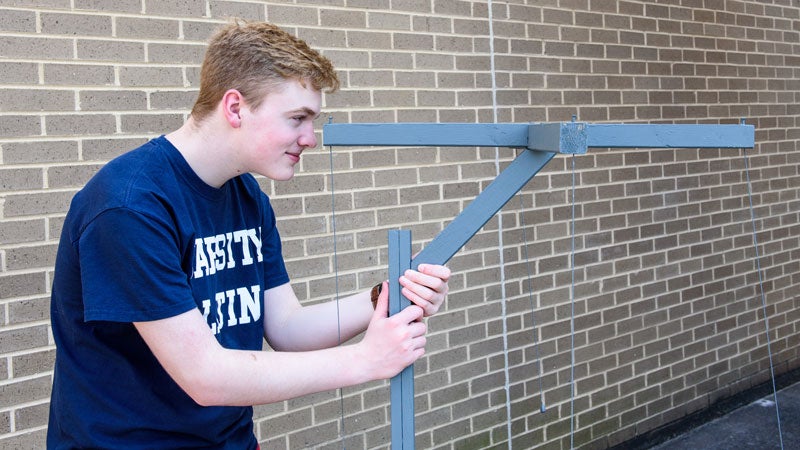 But what is a groma exactly? We had to ask, too. Answer: a surveying tool with pendulums on all four ends of crossbar that is used to plot right angles for roads and setup army camps. “Everything the Romans did would have been utilized to build aqueducts and roads,” Welle explains. “It’s a simple tool, but it says more about the operator than the object itself.”
But what is a groma exactly? We had to ask, too. Answer: a surveying tool with pendulums on all four ends of crossbar that is used to plot right angles for roads and setup army camps. “Everything the Romans did would have been utilized to build aqueducts and roads,” Welle explains. “It’s a simple tool, but it says more about the operator than the object itself.”
The club got its start five years ago with an innovation grant Welle wrote with the school’s physics teacher at the time. Like the students, Welle is a fan of using power tools. In some ways, he says, it was just an excuse to do woodworking and get students involved. He’d built furniture before, but this would be his first foray into Roman structures. “It’s taking some of the historical stuff they had learned to another level, connecting the physical with the abstract stuff they learned,” he says.
And so each spring semester they take over the school’s robotics room and its power tools a few afternoons a week (robotics competitions are in the fall). In physics class you might make something out of PVC pipes, but for these projects students stay “reasonably true” to assembling something out of wood, partly because that sets up a unique set of challenges.
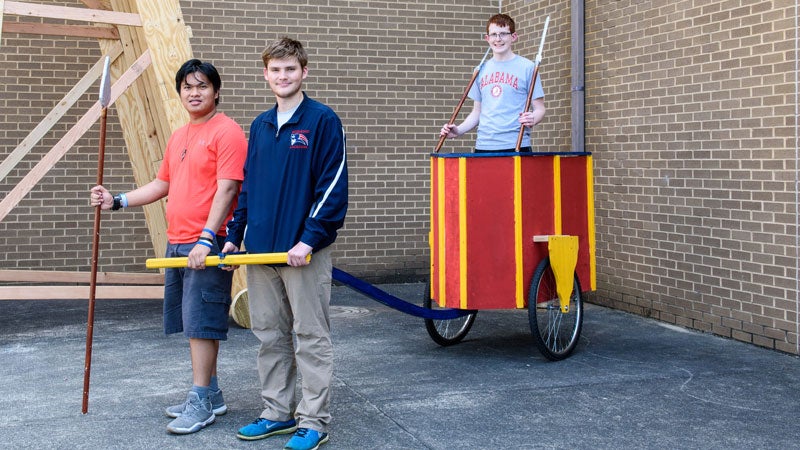 For the chariot, that meant using clamps to bend the wood to make a yoke, before adding bike wheels (“It would have been a bit too difficult to craft raw wheels,” Franz Mercado says.) and coating the structure in red, yellow and blue paint. In ancient times, it would have been pulled by a horse, likely with both an archer and warrior in it, but since the school didn’t have a horse on hand, they used human power instead.
For the chariot, that meant using clamps to bend the wood to make a yoke, before adding bike wheels (“It would have been a bit too difficult to craft raw wheels,” Franz Mercado says.) and coating the structure in red, yellow and blue paint. In ancient times, it would have been pulled by a horse, likely with both an archer and warrior in it, but since the school didn’t have a horse on hand, they used human power instead.
The three seniors, all females, who built the siege tower perfected their use of the dremel (their favorite power tool) and the circular saw along the way. “You could build a roof on a house with the skills they have developed,” Welle says. But instead of a house, they created a tower used as an access point to a wall, drawbridge and all, that Romans used when they were taking over a city.
“I became really impressed that (the Romans) would chop down the trees nearby and build (a siege tower) 30 feet high in a day or two,” senior Anne Popple says, noting their structure was only half that height and took far longer to build. The chariot team was similarly impressed by the Romans’ ability to build hundreds of chariots in a matter of days. “And (the chariots) were perfect and went into battle with them,” Franz says. “It shows how smart the Romans were.”
Welle, whose interest does in fact dig deeper than just woodworking, provides context for it all: “The Roman army was an Army Corps of Engineers, and they were really organized and repetitive. They always built the same thing, and everyone knew their job and they had the tools for it. That’s how they could do it so quickly.”
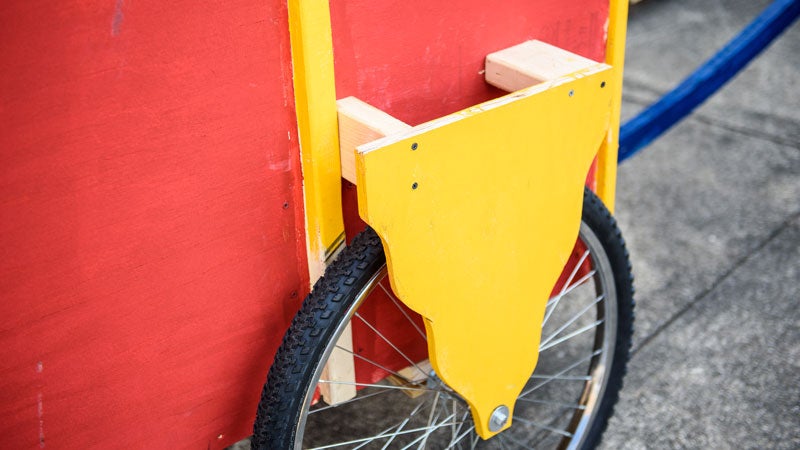 Next up, this year’s groma team has their eye on crafting a trebuchet, the medieval successor to the catapult. What would they catapult in it? “The question is who we would catapult in it,” Welle says. Probably tennis balls, maybe some rocks, the students echo.
Next up, this year’s groma team has their eye on crafting a trebuchet, the medieval successor to the catapult. What would they catapult in it? “The question is who we would catapult in it,” Welle says. Probably tennis balls, maybe some rocks, the students echo.
As to this year’s projects, Welle’s future students will take out the groma to make measurements using geometry, and the siege tower will have a second life as parts of other projects (RIP siege tower). As for the chariot, word is Welle is talking about pulling the drum major or mascot in it at football games. Time will tell whether he was joking or not.
Meet the Teams
Chariot
Hunter Bryant
Shira Hamby
Joshua Hynds
Franz Mercado
Groma
George Breeden
Michael Moorman
Siege Tower
Katherine Coulter
Theresa Hardin
Anne Popple

